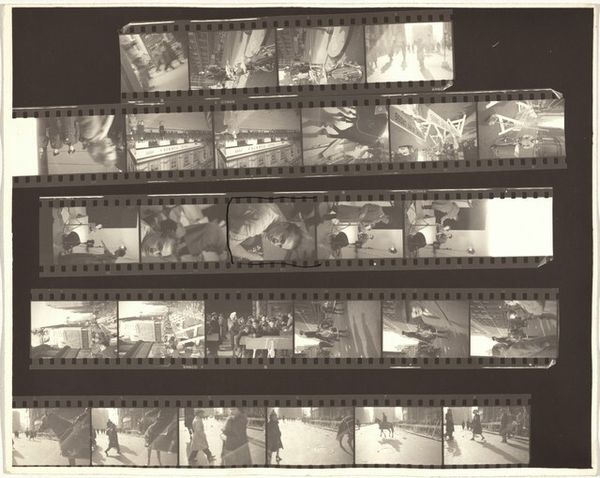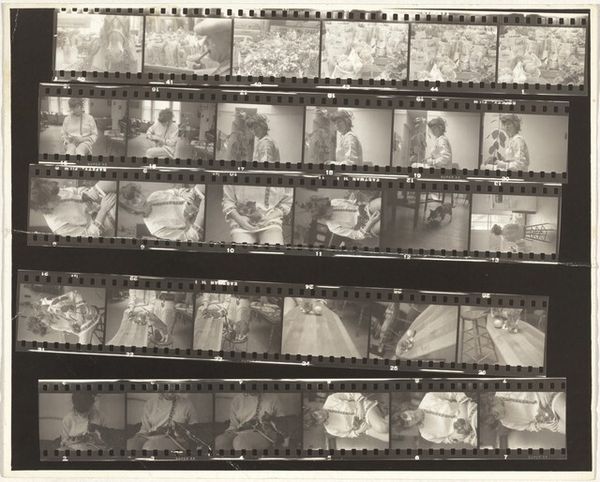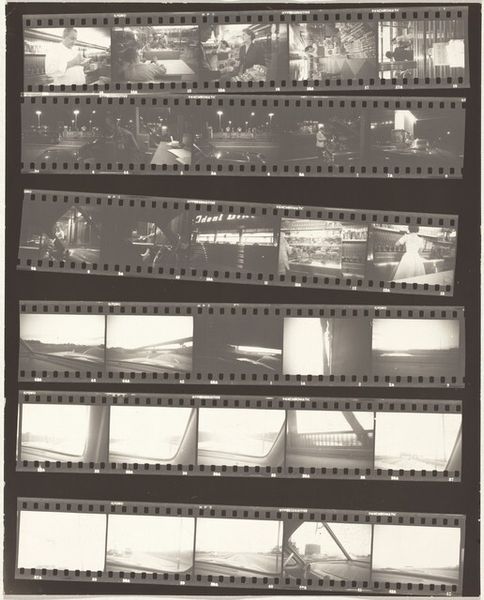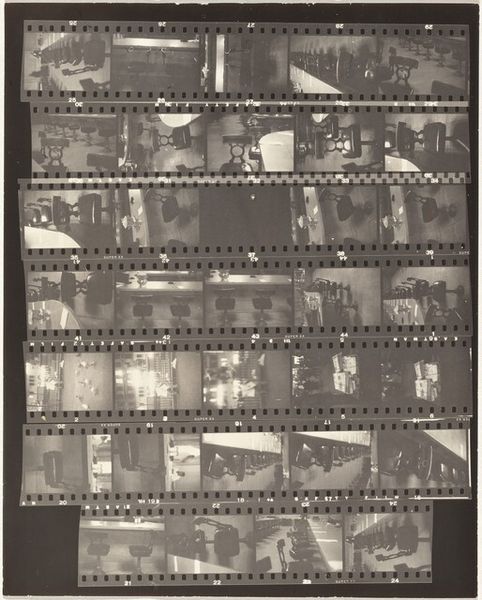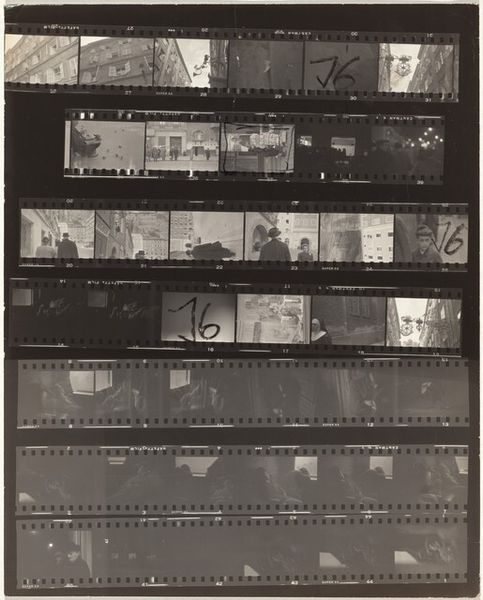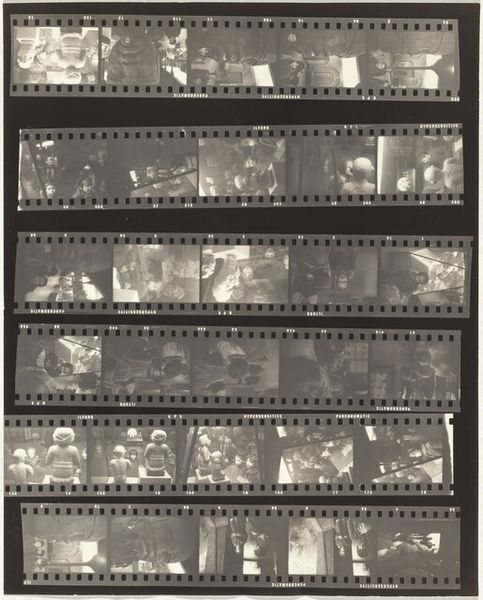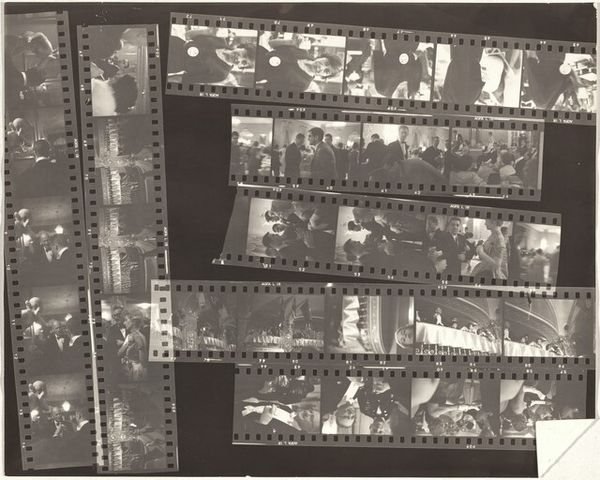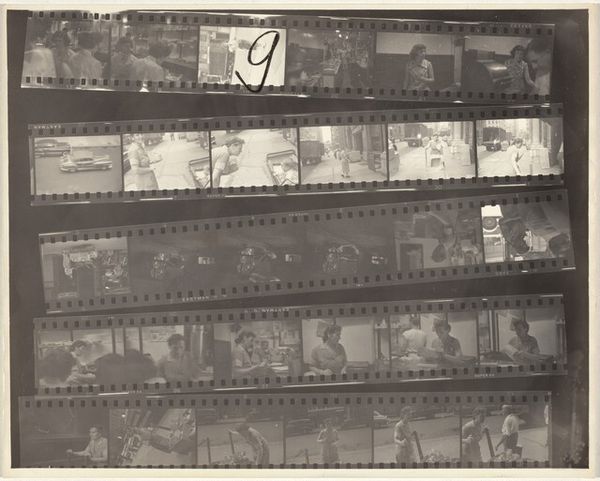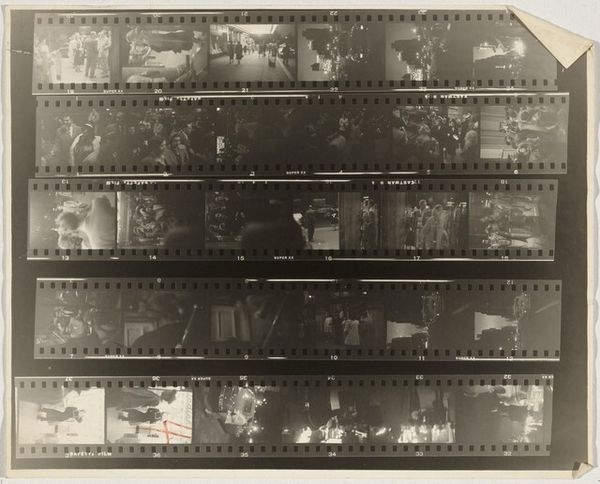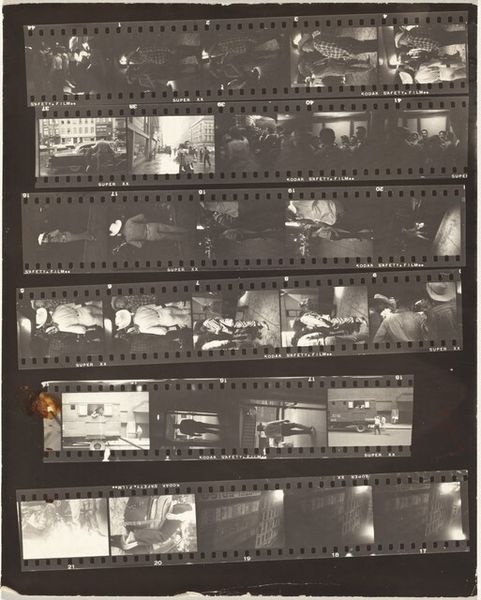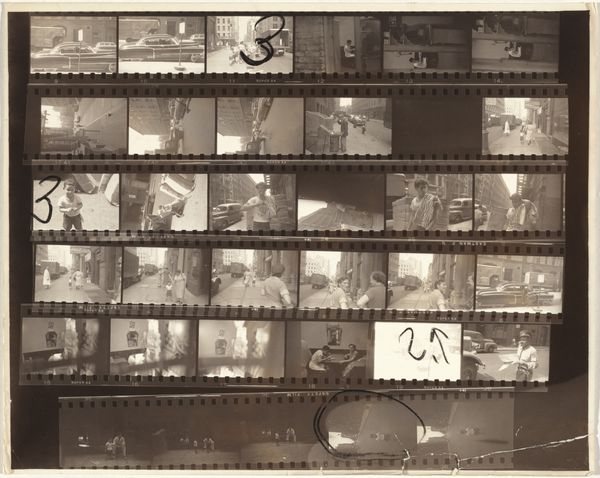
photography, gelatin-silver-print
#
abstract-expressionism
#
landscape
#
street-photography
#
photography
#
gelatin-silver-print
#
cityscape
#
realism
Dimensions: overall: 20.2 x 25.2 cm (7 15/16 x 9 15/16 in.)
Copyright: National Gallery of Art: CC0 1.0
Curator: Robert Frank's "11th Street Story 26," a gelatin silver print created in 1951, offers a layered glimpse into a moment in time. What’s your initial read on this piece? Editor: Immediately, I notice a raw, documentary feel. There’s a sense of intimacy—but also detachment. It’s like eavesdropping on everyday life; seeing what is shown and left out of focus. Curator: It’s intriguing how the unedited strip of film invites that reading. Each frame acts as a microcosm. How do the subjects appear to you? Editor: There’s a mix. Some faces appear almost confrontational, but they are juxtaposed against moments of seeming leisure or domesticity. In others, it feels as though the camera has stolen glances; this really invites an analysis of photographic consent at that time, what did being looked at or represented mean for these people? Curator: Considering it’s a gelatin silver print, a process dating back to the 1880s, and the photograph being created in 1951, there’s an interesting contrast in the speed of life. Street photography encapsulates this tension—it reveals those tiny moments and interactions which go by too fast to notice. What do you feel, do you get a certain mood? Editor: The mood is melancholic. Although these are seemingly snapshots of everyday occurrences, the unpolished aesthetic amplifies a sense of unease, or a sense of alienation perhaps. The stark blacks and whites contribute to this atmosphere. Considering this was during the postwar period, and especially against what photography represented during the war, how does street photography fit into a political, sociological or historical view? Curator: Good question. The choice to leave the film strip whole changes the photograph. Usually, photographers will seek a clean or polished image in a singular view. To include the other outtakes invites you to reflect on the moment of choosing images, the editorial power dynamic the photographer embodies. Is the best version a real version? Editor: Precisely. The use of street photography creates an unembellished sense, the aesthetic that feels like something authentic; this style contrasts heavily against any constructed art form. It's hard not to wonder whose story gets centered. What does “reality” even look like here? Curator: This dialogue underscores its strength: prompting consideration of how a moment is represented versus how it lives on as documentation. The unedited roll, by revealing a narrative beyond one singular frame, reminds us of its cultural endurance, still today. Editor: Exactly. Frank's "11th Street Story 26" uses images to speak to social complexities, which still invites more questions than answers, today.
Comments
No comments
Be the first to comment and join the conversation on the ultimate creative platform.
